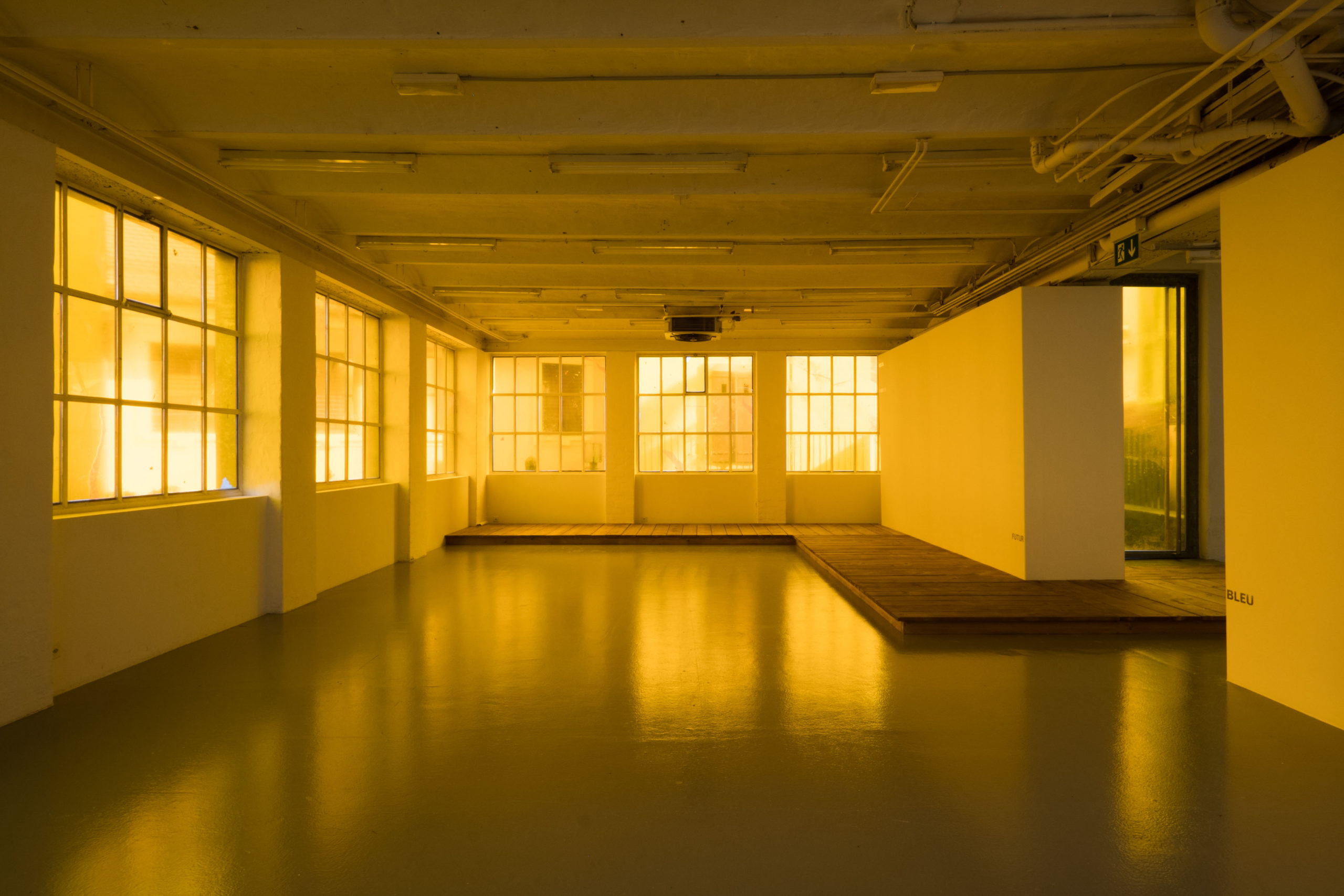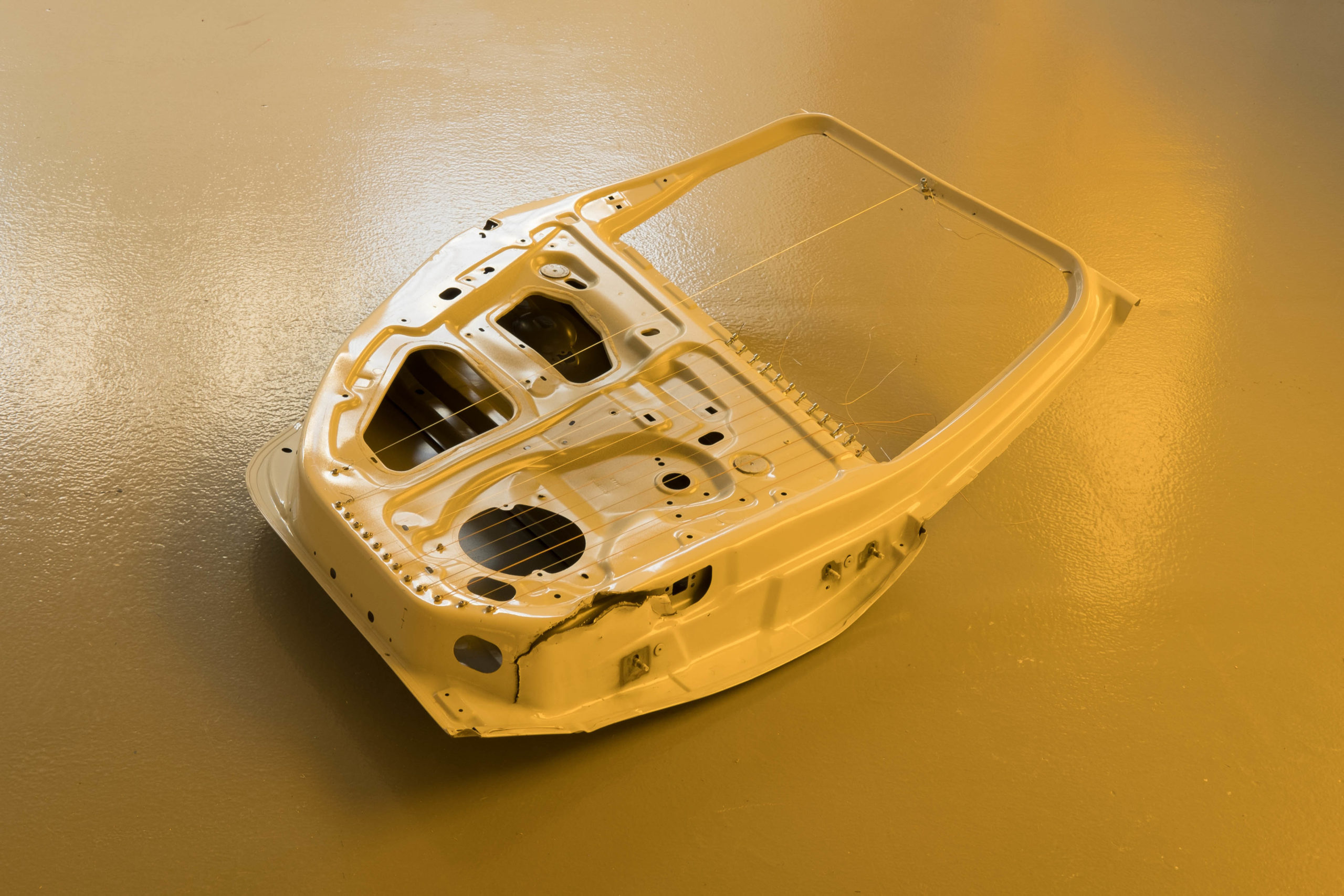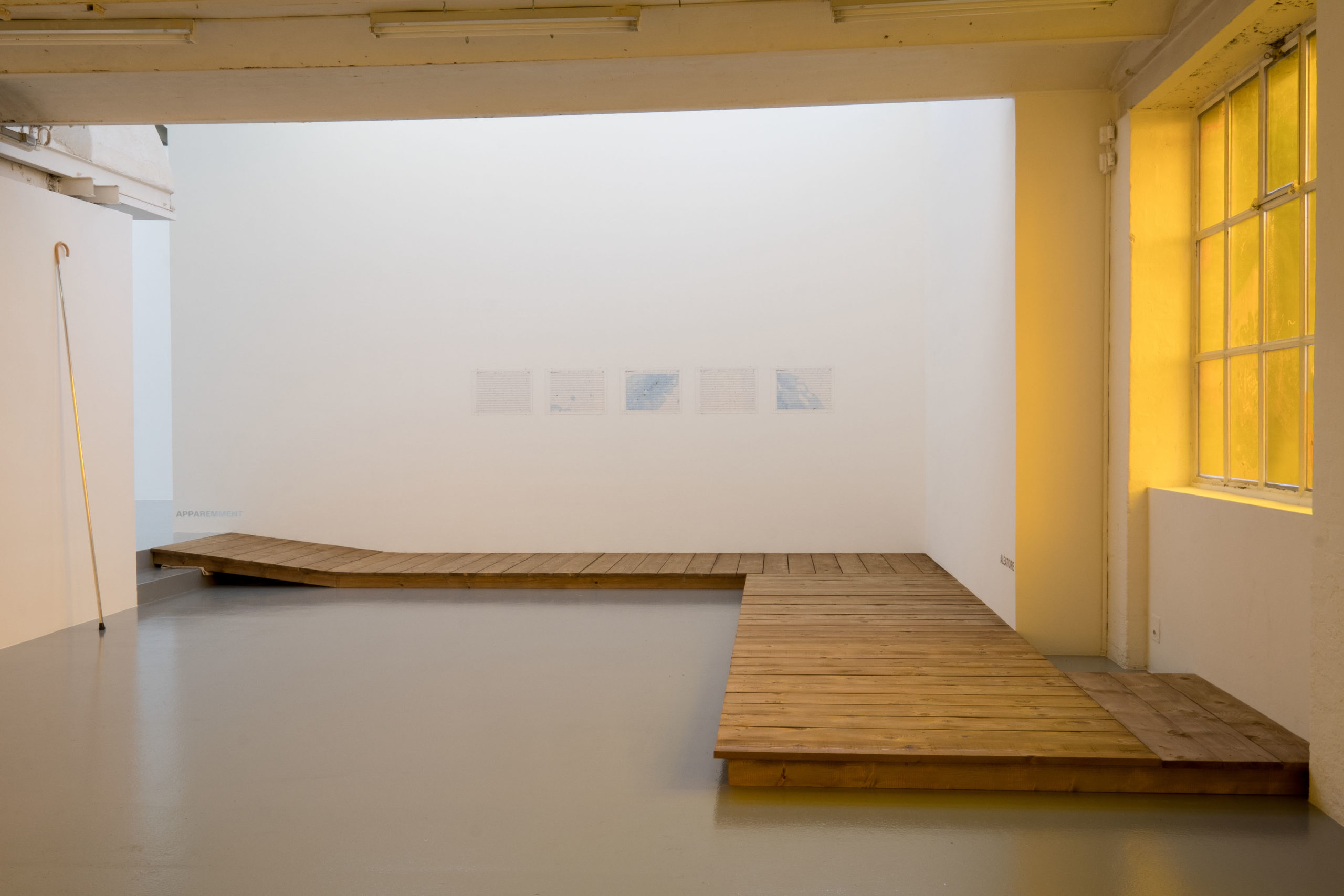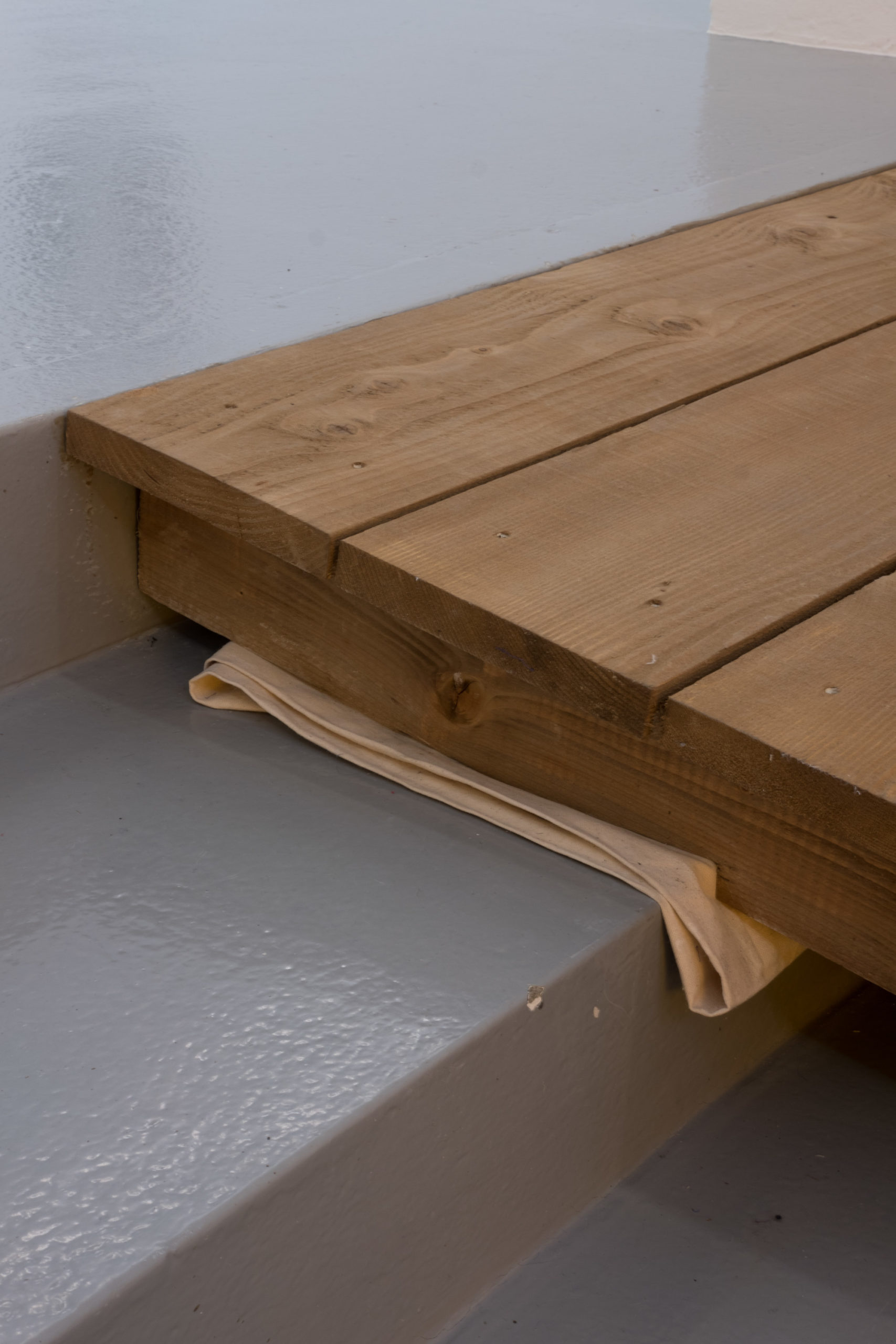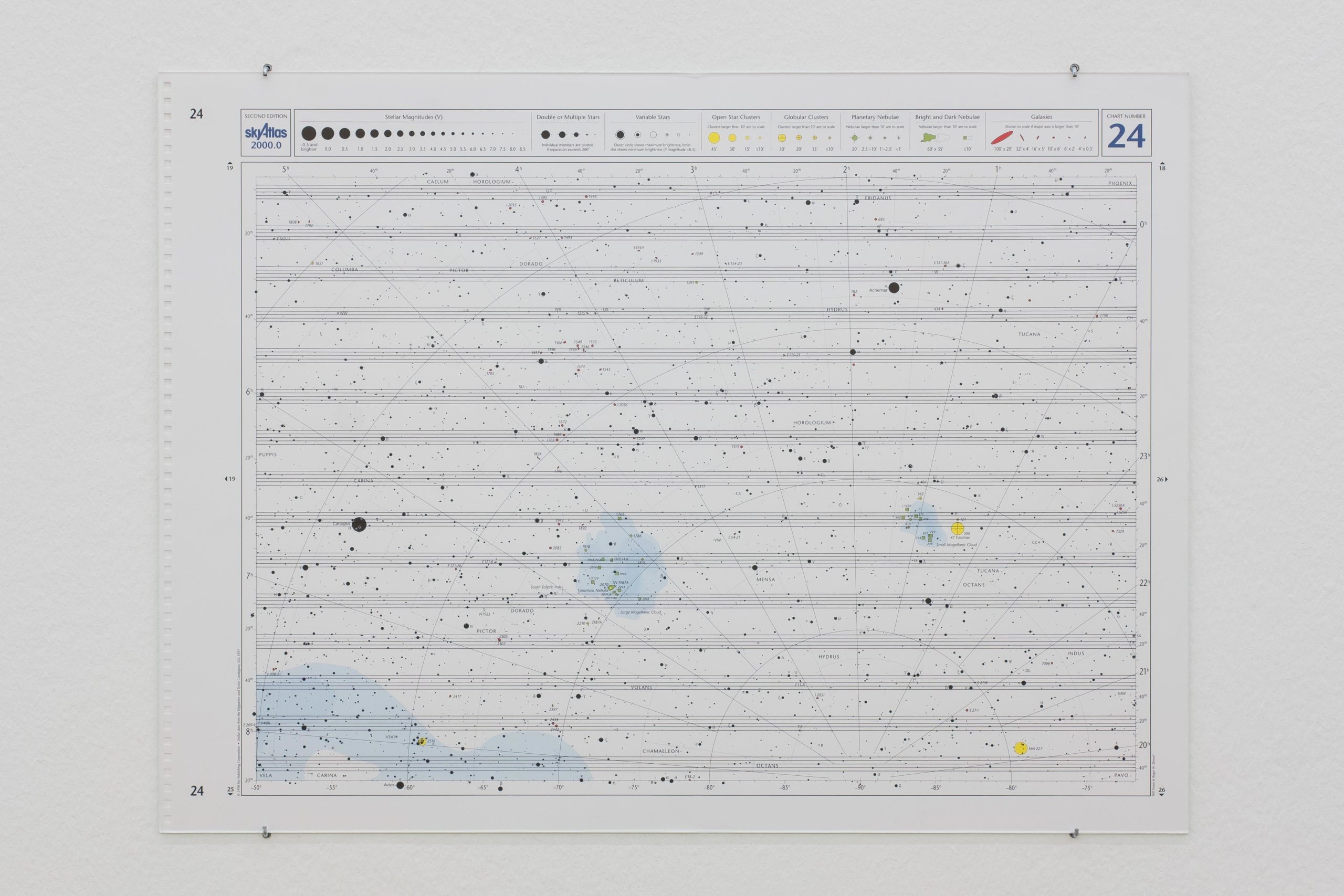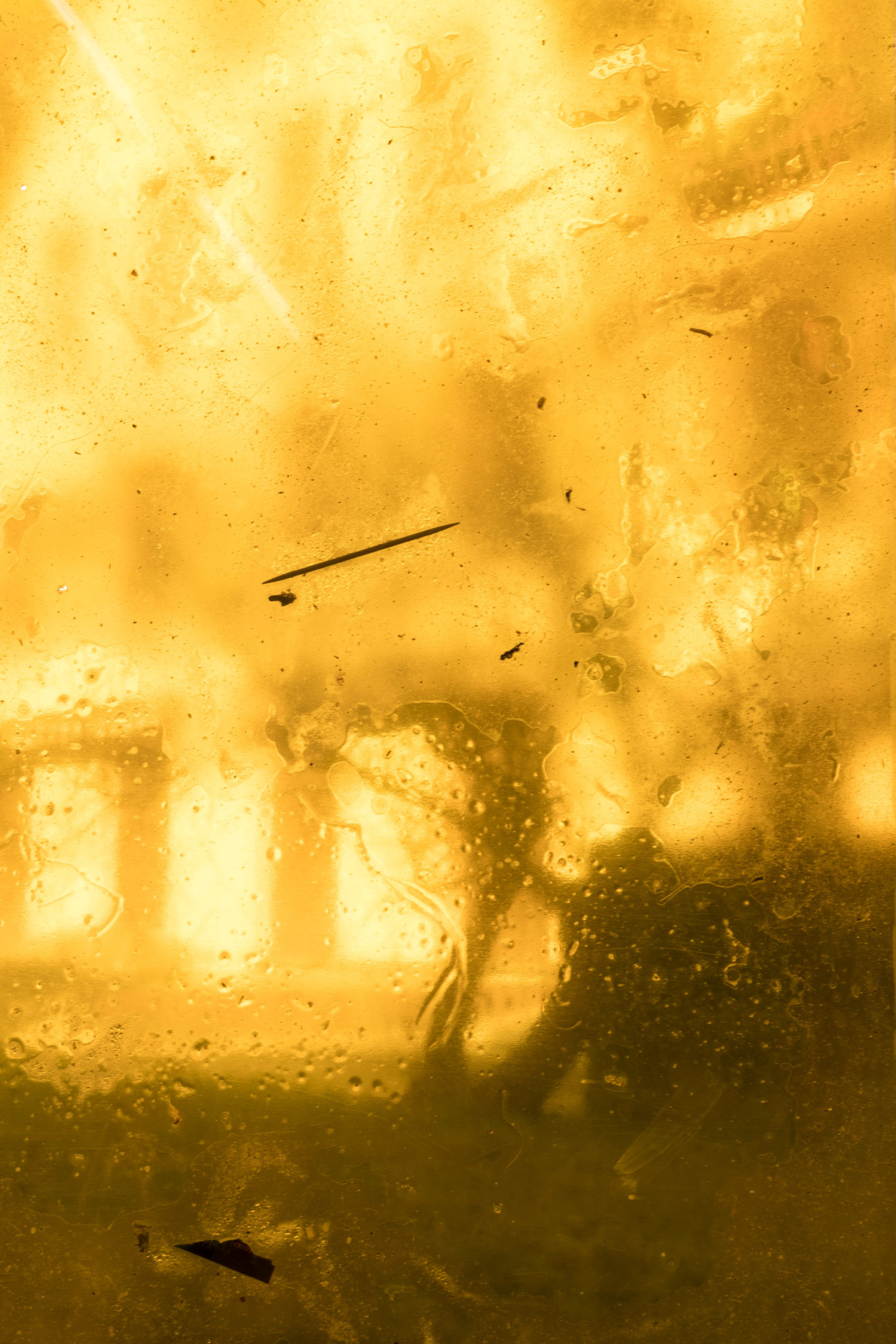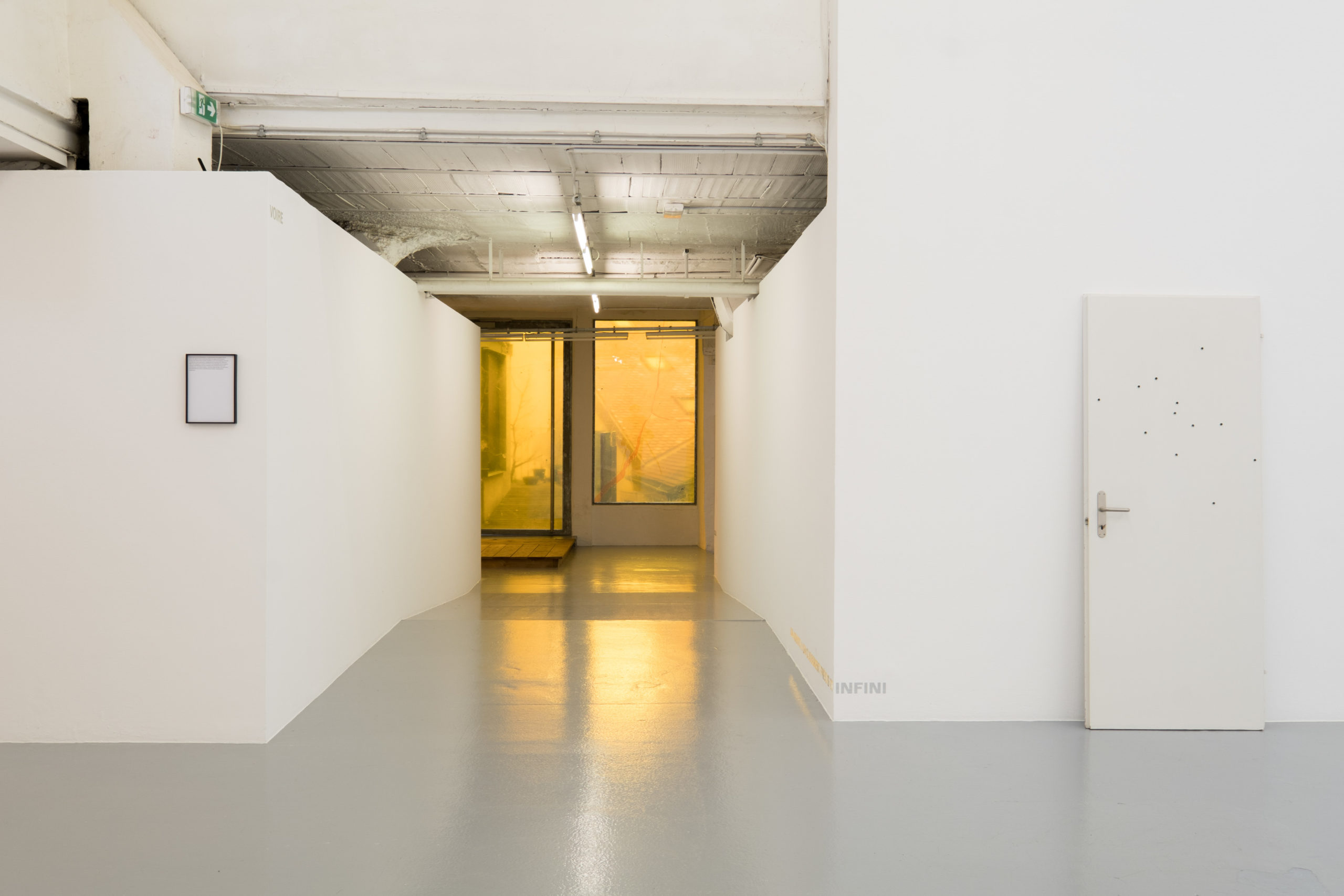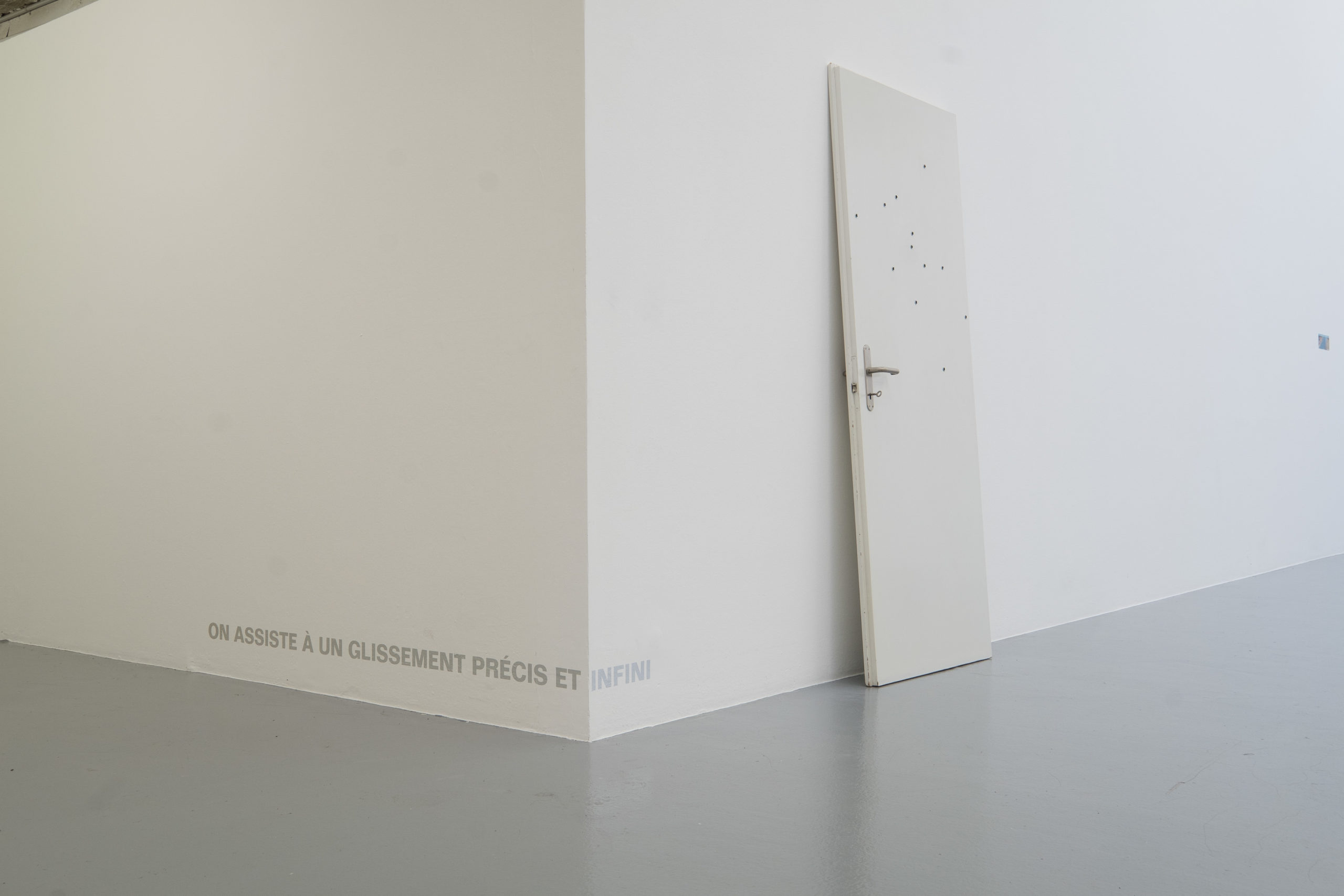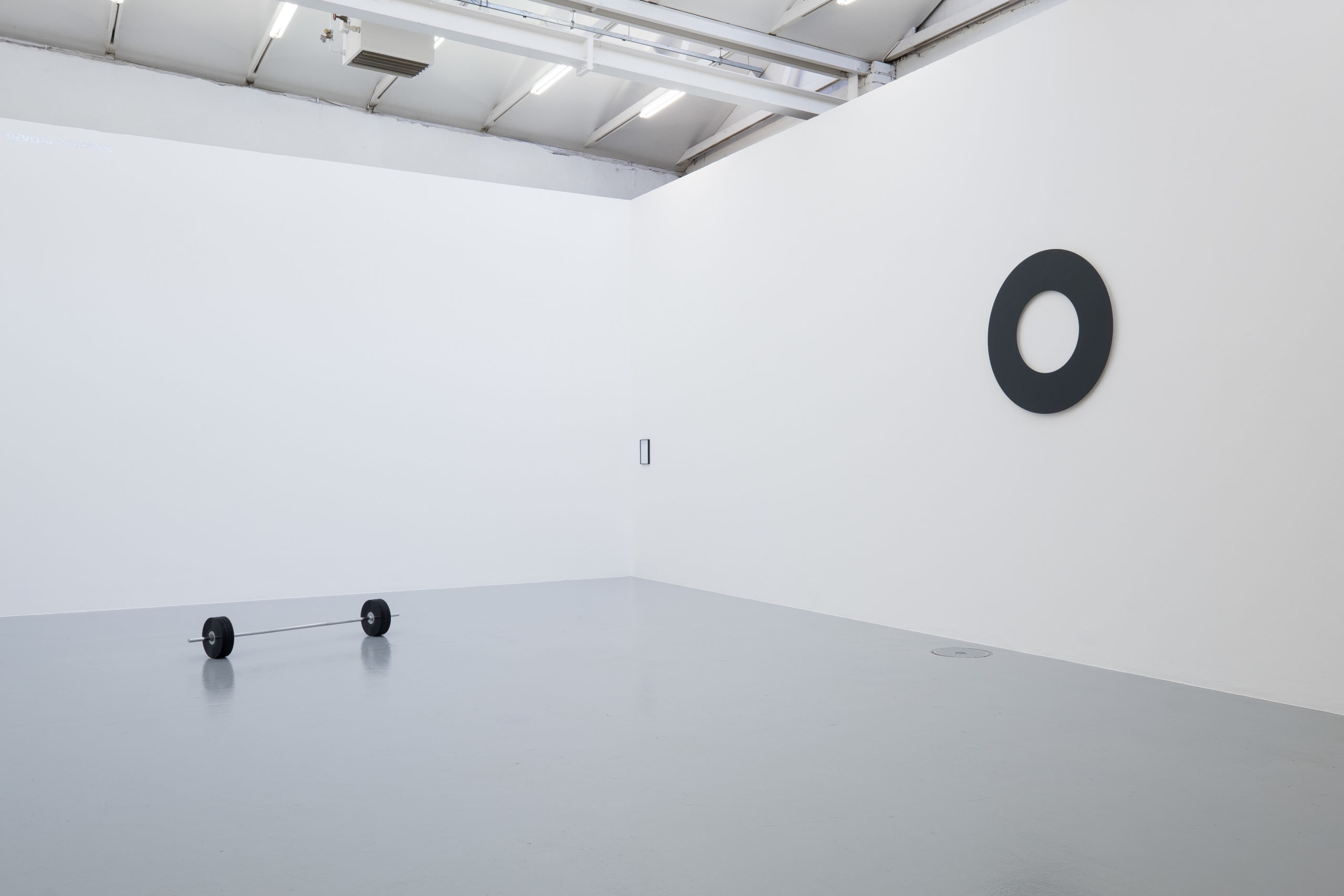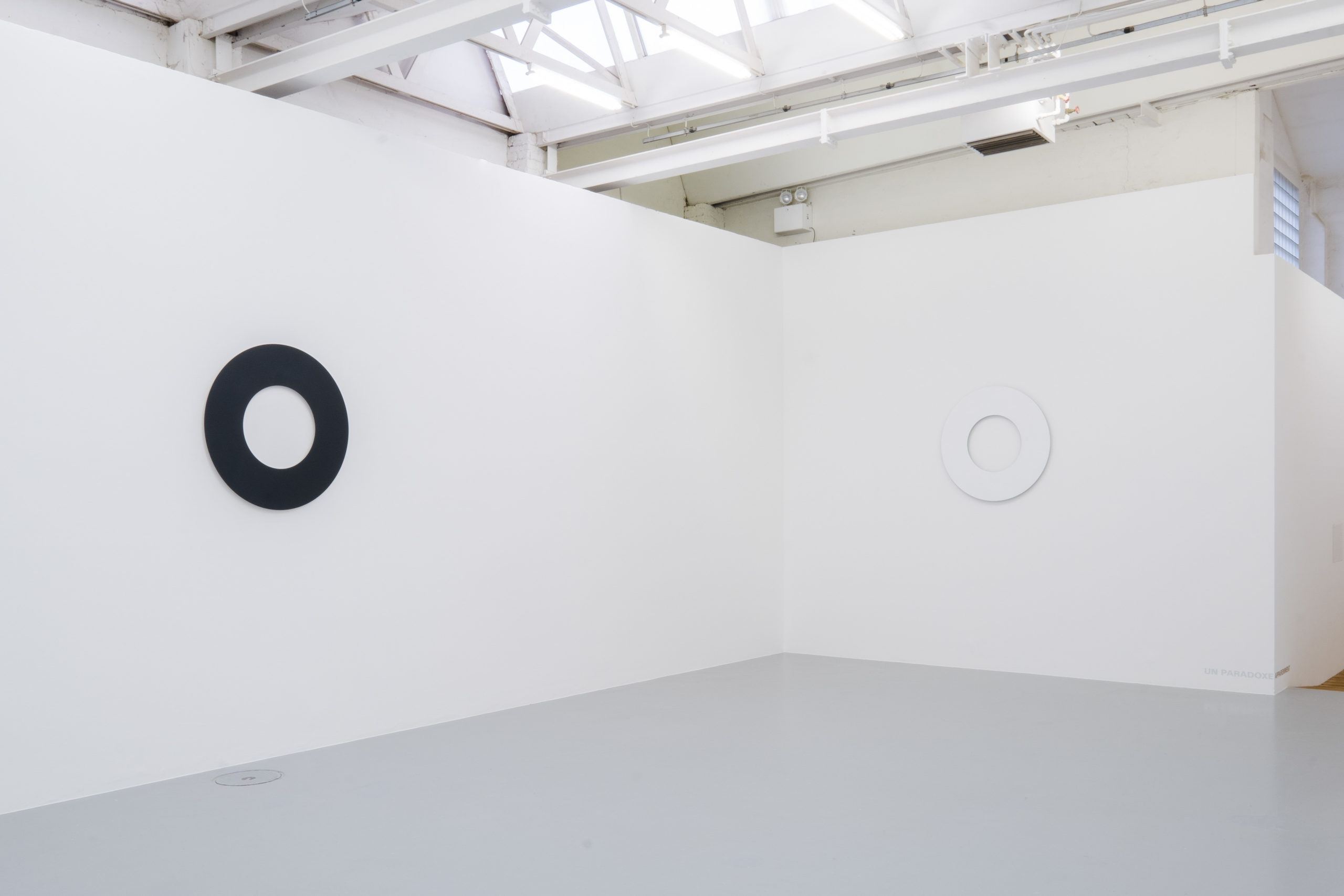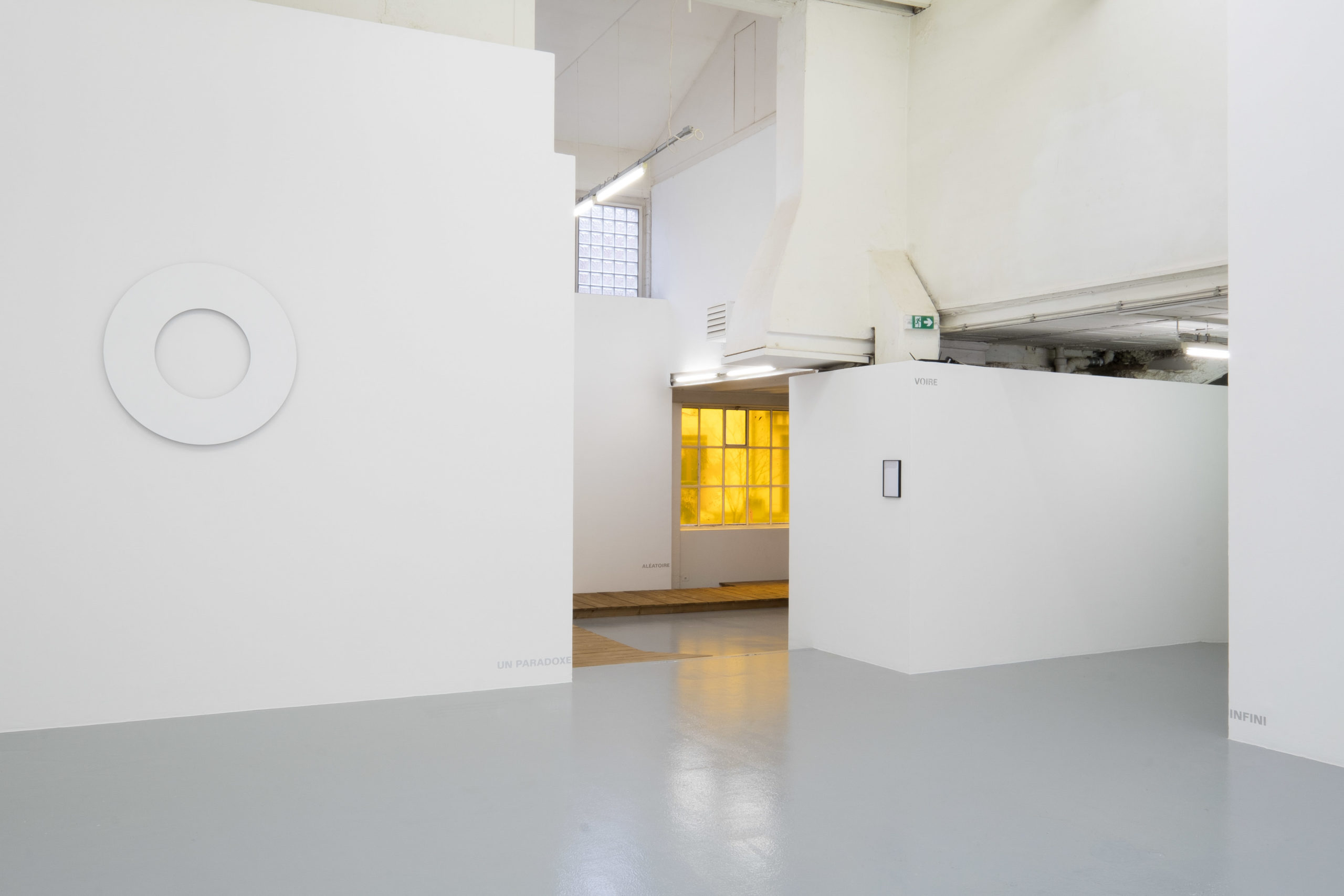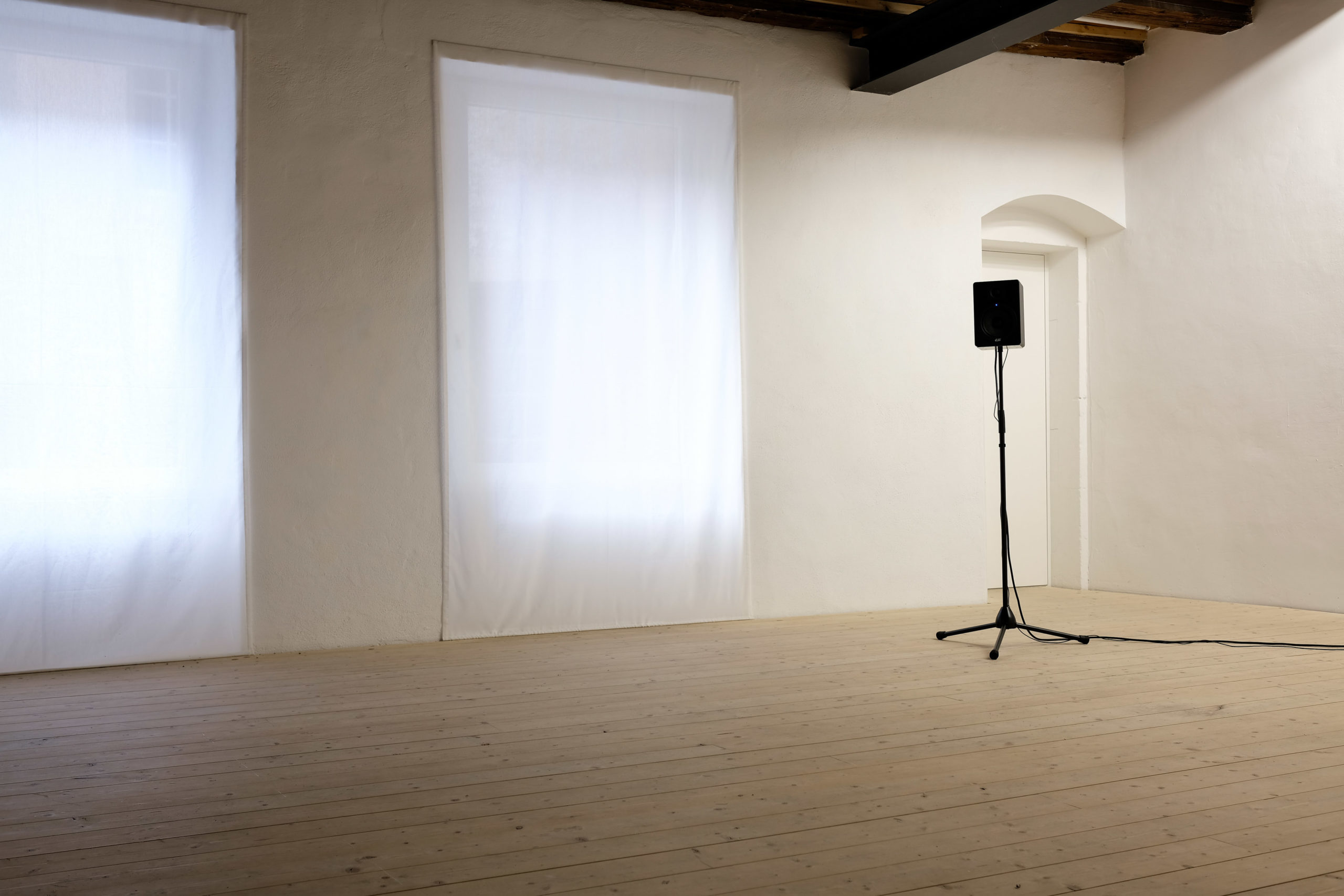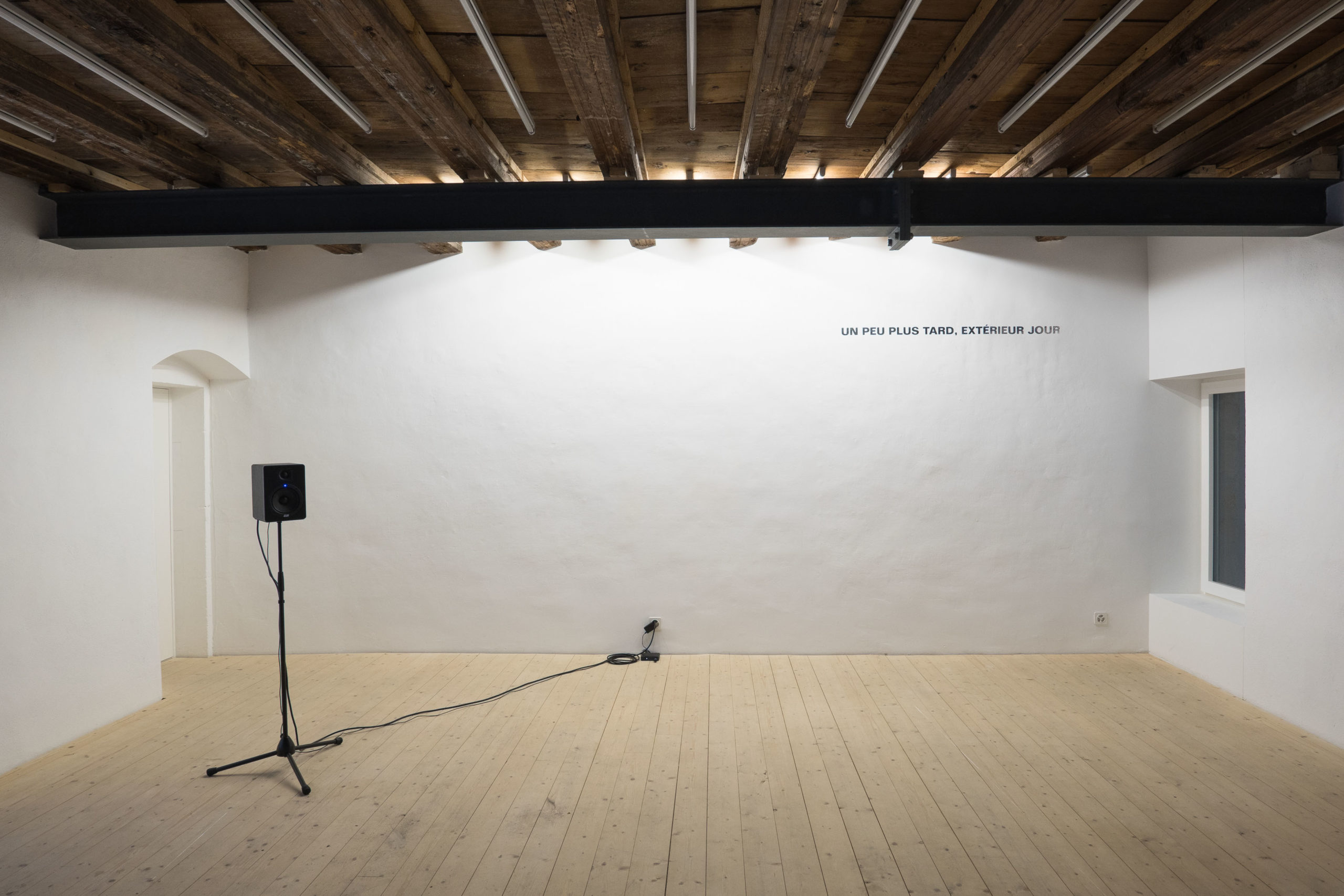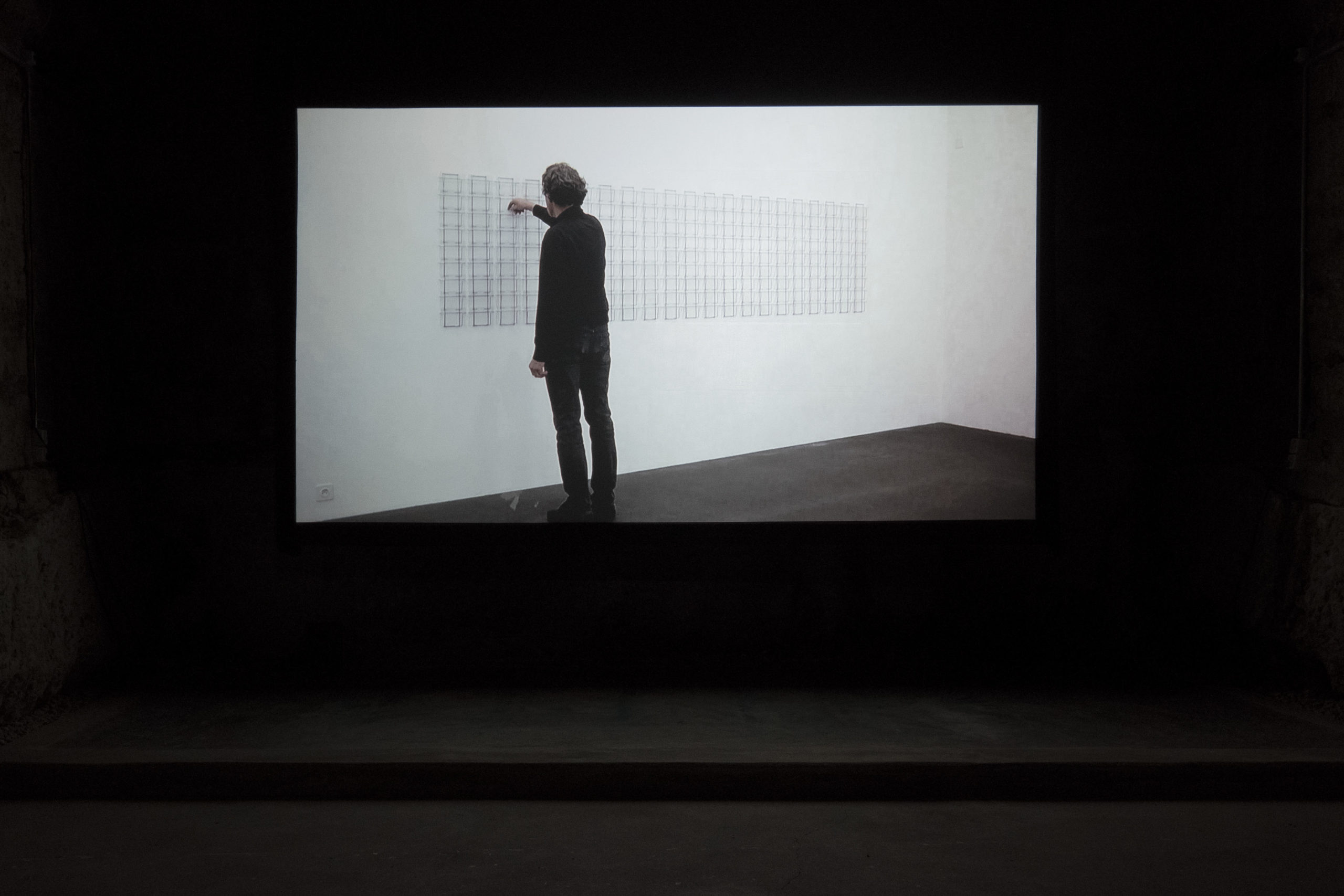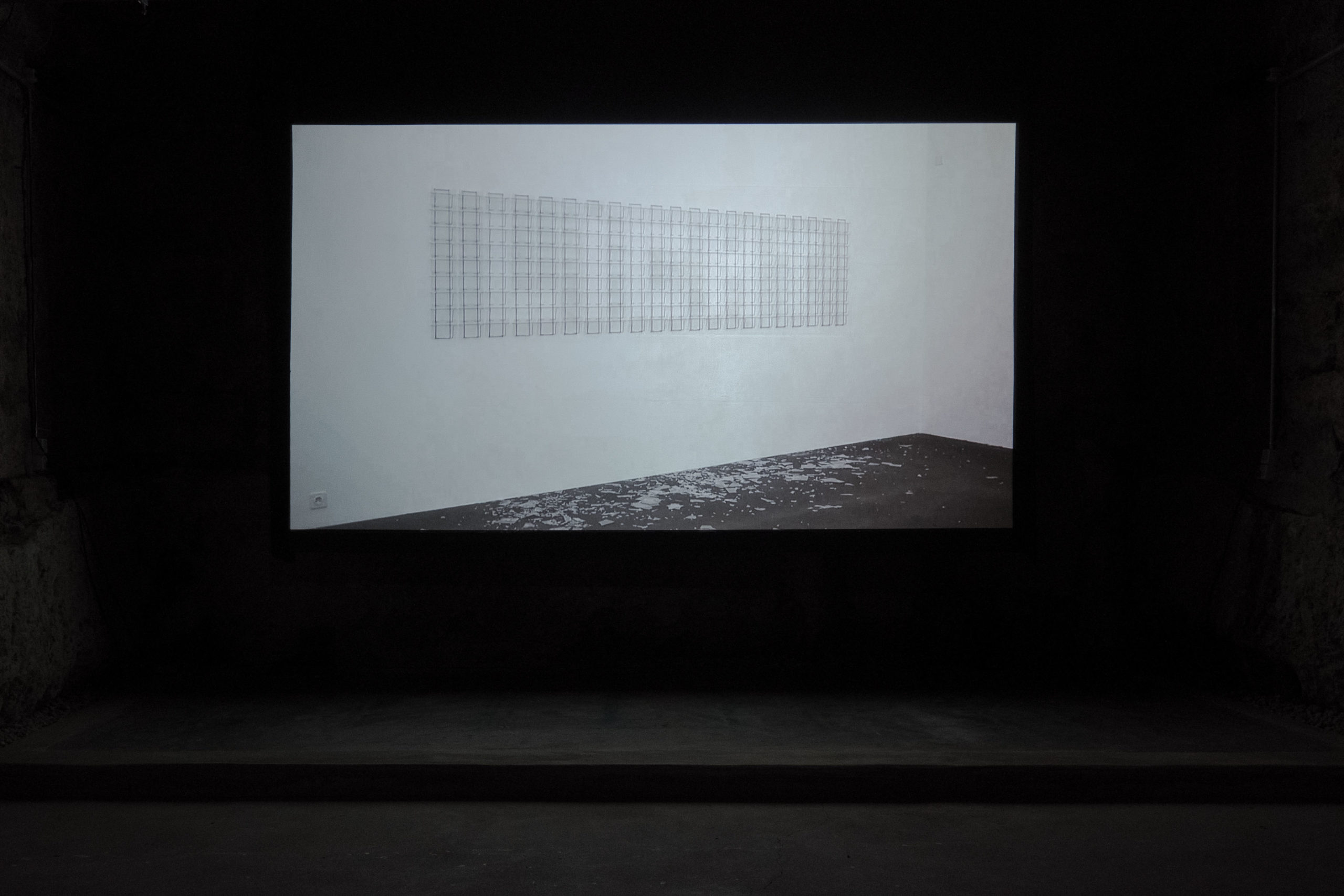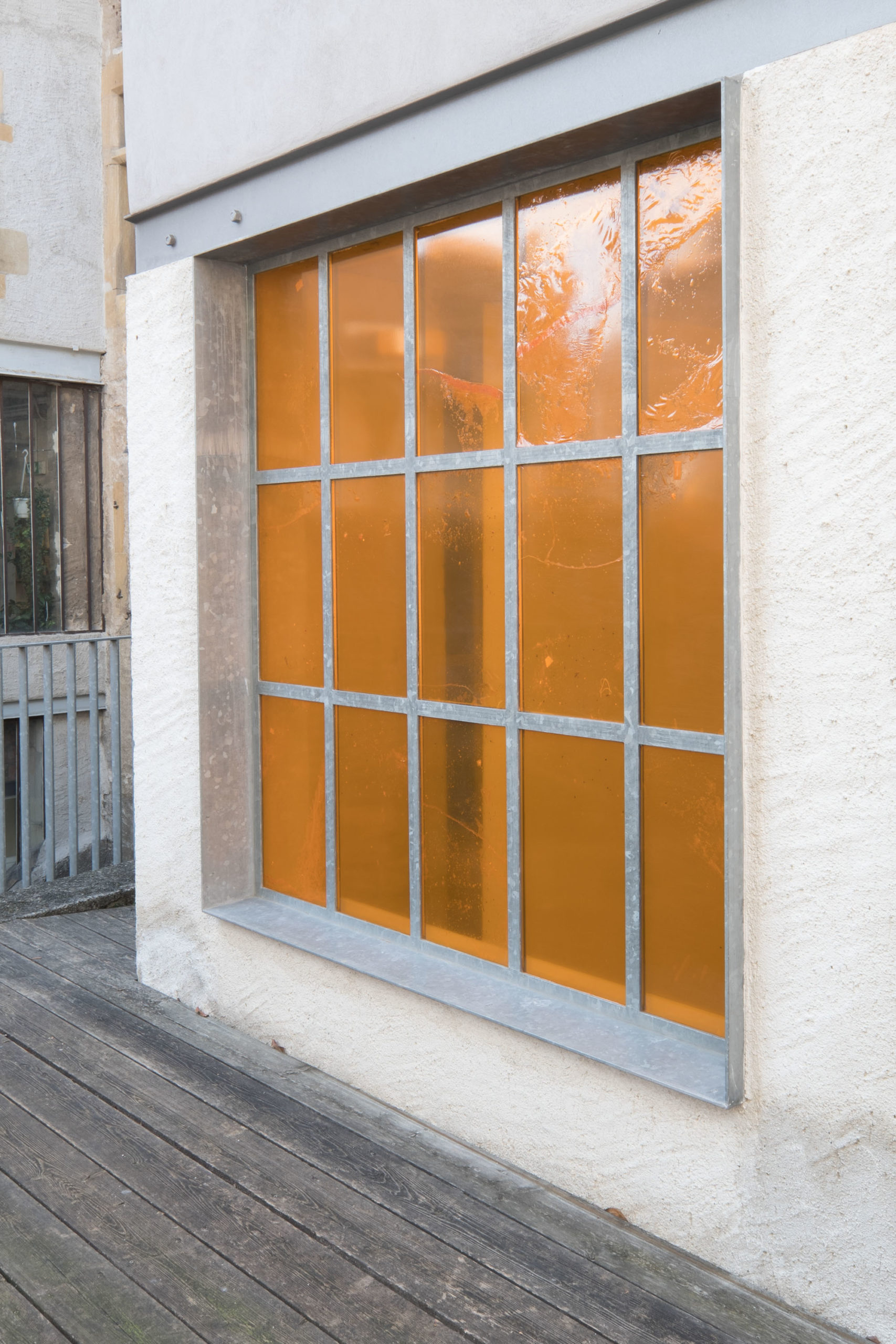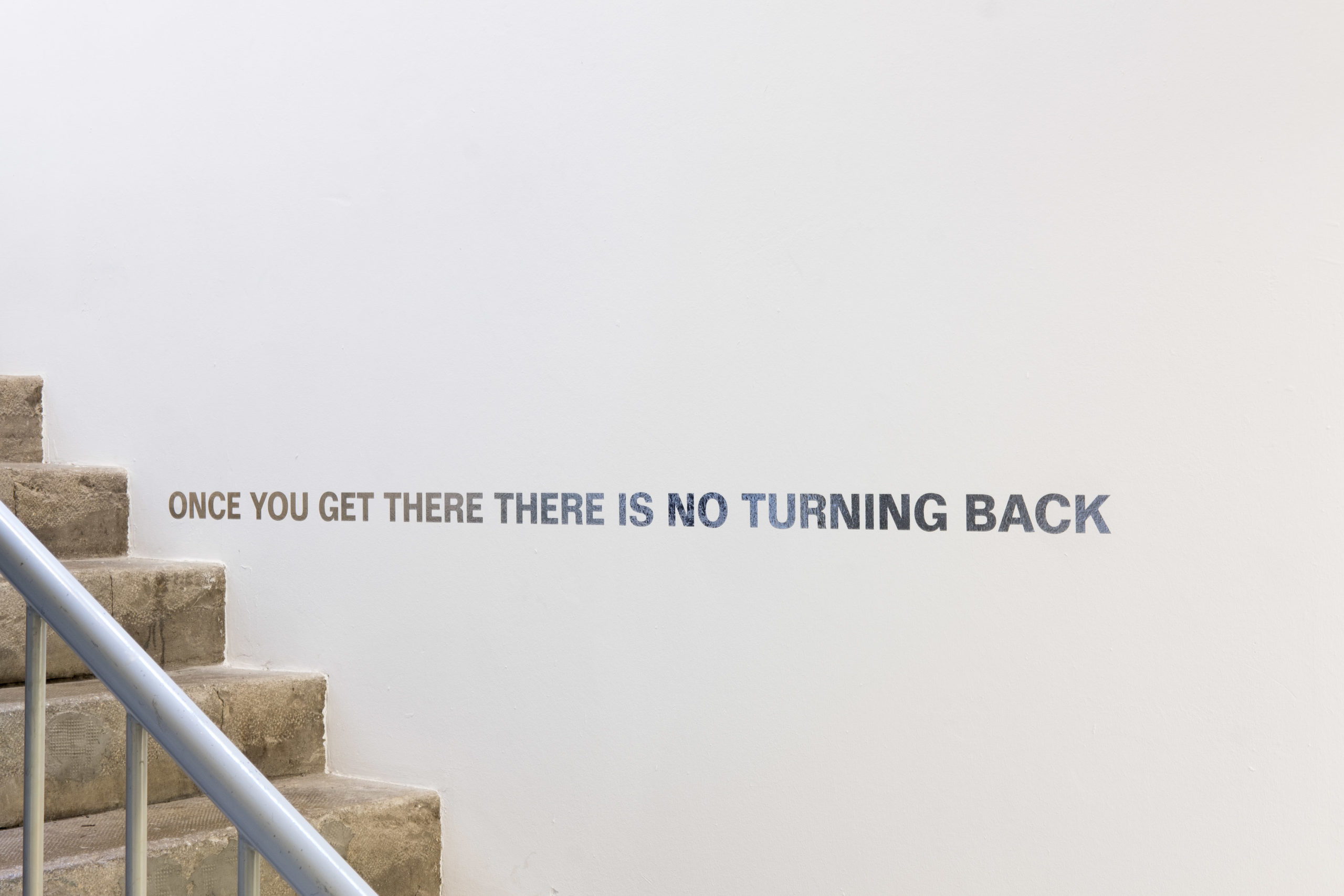Artist Artist
Project Project
Tempo Elastico
Sunrays strain to pierce the thick layer of stratus covering the Swiss Plateau in these early weeks of the year. Soon it will be two o’clock in the afternoon and the large picture window facing north lets in just enough light to make us hesitate about turning on the tubular lighting. At the same time, an intriguing sound, long in dying, reverberates behind the wall; a human voice can be heard, it seems. As soon as the brief apparition vanishes, the orange silence returns.
Elsewhere on the Plateau, some 75 km from there, in a studio whose atmosphere seems pleasantly familiar to us, art experiments freshly carried out amply cover the floor and walls. These are found next to things created over the last thirty years, but without one being able to differentiate the older from the more recent. Varied and repeated forms suggest multiple references and plunge us in a landscape that is tinged with humor while recalling the advent of Minimalism. You lose your bearings very quickly and struggle to believe that all of what you see is the work of one and the same person. Yet everything does seem to be in its place and our eye gradually catches and hangs onto a circle motif that is obsessively repeated in the works. A certain coherence takes shape and the connections then become obvious. We are in Burgdorf in a repurposed factory where several years earlier Peter Gysi, the son of an ironmonger, set up shop and has practiced his art ever since. This is a far cry from a passing whim. For Gysi, creating art objects is on the order of a daily exercise on which the teetering balance of his wellbeing depends more than any proud search for some measure of celebrity. At this precise moment, time indeed seems to liquefy, flow, and follow its natural course.
Twenty-four years earlier, the renovation work going on at 37 rue des Moulins to transform the site into an art center was coming to an end. The opening of the inaugural show called Is it Nice? was set for 11 March 1995. Bringing together artists and artist groups that were working or had worked in Nice, the exhibition hoped “to sound the notion of place in artmaking and put it in perspective.” Since then these spaces have been transformed and refurbished many times over to host the hundreds of exhibitions that have been held there since. Delphine Chapuis Schmitz has discovered the art center’s history by delving into its textual archives. Working as an archeologist, she has drawn fragments, strings of words, from this corpus, which she revives and makes resonate in the monumental hollow of the white cube of CAN, the Centre d’art of Neuchâtel. Through narrative, the artist projects us into the infinite possibilities the site contains. Time stretches out and curves back on itself, making our heads spin. So many things have taken place here and so many new proposals are left to imagine; how many times can we shake up the structure again before it gives way?
Much further away, at the foot of Mount Fuji, Philémon Otth discovered through the window of his computer screen these news images, which seem nonetheless to come to us from another time, i.e., the smoldering town of Paradise, California. The appearance is apocalyptic. The images are suffused with a golden-yellow end-of-day light while the burnt-out shell of a car mirrors the disastrous scope of the situation. This view brings to mind another, a chunk of amber in which an insect was trapped millions of years before and fossilized in the ensuing years, as if in a long pause in which all movement in the material was frozen. Back on the slopes of the Jura, the exhibition galleries are covered by a light coat of dust. A wooden platform rises from the floor and runs along the walls, forming a link between the interior and the exterior. It maintains the free- floating ambiguity of our symbiotic relationship with nature. This transition zone slips away from the concepts of borders that structure contemporary space, recalling certain elements of traditional Japanese architecture. The growing darkness, accompanying a slow dilation of the pupils, becomes deeper, more pronounced, portending the tipping point towards a new day. It is around 6 pm, the sun slips away.
Opening Saturday February 9 2019 from 14h to 17h47
Exhibition from February 9 to March 10 2019
Open Wednesday to Sunday from 14h to sunset
CAN team:
Martin Jakob, Sylvie Linder, Magali Pexa, Nicolas Raufaste, Julian Thompson, Sebastian Verdon

